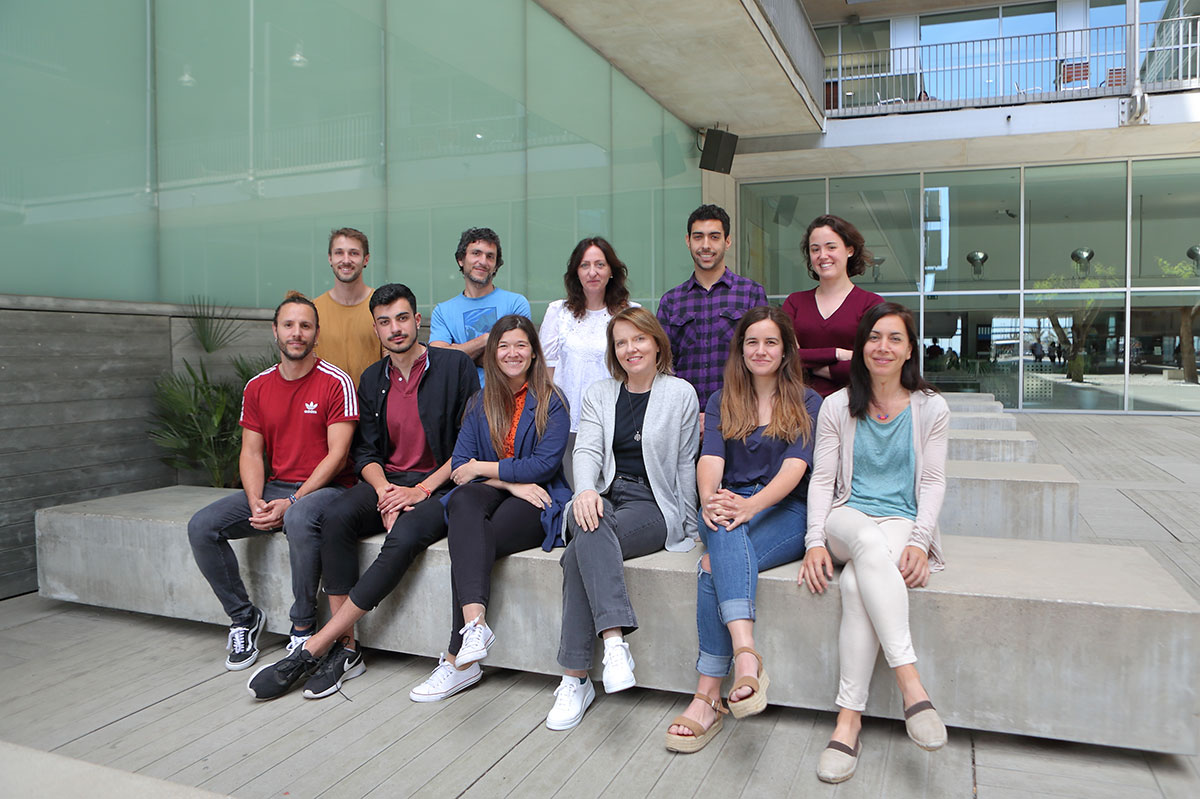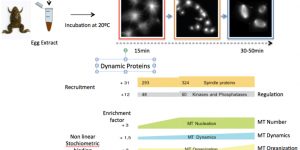The development and growth of multicellular organisms as well as the renewal and homeostasis of their tissues rely on the controlled proliferation of their cells. Errors during cell division are deleterious for a cell and an organism as they can generate aneuploidies, a hallmark of particularly aggressive tumours and one of the main causes of spontaneous abortions.
Cell division entails a dramatic reorganization of most cellular components and the assembly of the bipolar spindle, a microtubule (MT) based apparatus that provides the forces and mechanical support for moving and segregating the chromosomes accurately. Most animal cells enter mitosis with duplicated centrosomes that provide an active source of dynamic MTs but spindle assembly relies largely on the nucleation of acentrosomal MTs occurring in a RanGTP dependent manner around the chromosomes after nuclear envelope breakdown. During the last year, we used a mass spectrometry proteomic approach to look into spindle self-organisation. We obtained the proteome of RanGTP induced mini-spindles as they self-organise over time. Our results show that these microtubule assemblies are similar to the bipolar spindles from cells and that their self-organisation involves specific dynamic changes in their associated proteome. In collaboration with Clinica EUGIN we also showed that the Xenopus egg extract system can be used to obtain relevant functional information about human sperm samples from patients.
Amargant F, García D, Barragán M, Vassena R, Vernos I.
“Functional Analysis of Human Pathological Semen Samples in an Oocyte Cytoplasmic Ex Vivo System.”
Sci Rep, 8(1):15348, 2018.
Amargant F, Barragan M, Vassena R, Vernos I.
“Insights of the tubulin code in gametes and embryos: from basic research to potential clinical applications in humans.”
Biol Reprod, doi: 10.1093/biolre/ioy203, 2018. [Epub ahead of print]
Rosas-Salvans M, Cavazza T, Espadas G, Sabido E, Vernos I.
“Proteomic Profiling of Microtubule Self-organization in M-phase.”
Mol Cell Proteomics, 10:1991-2004, 2018.
Eibes S, Gallisà-Suñé N, Rosas-Salvans M, Martínez-Delgado P, Vernos I, Roig J.
“Nek9 Phosphorylation Defines a New Role for TPX2 in Eg5-Dependent Centrosome Separation before Nuclear Envelope Breakdown.”
Curr Biol, 28(1):121-129.e4, 2018.

